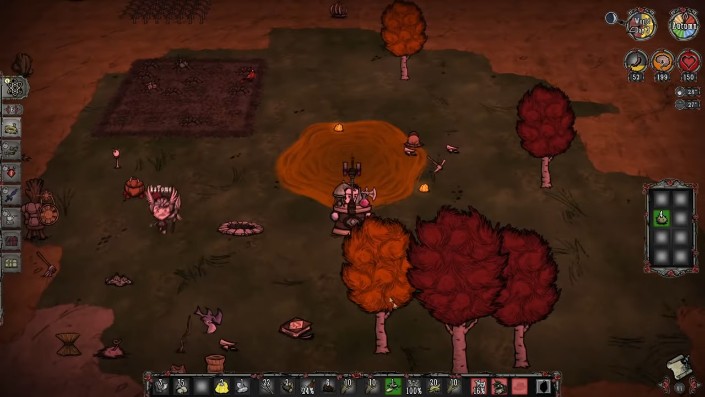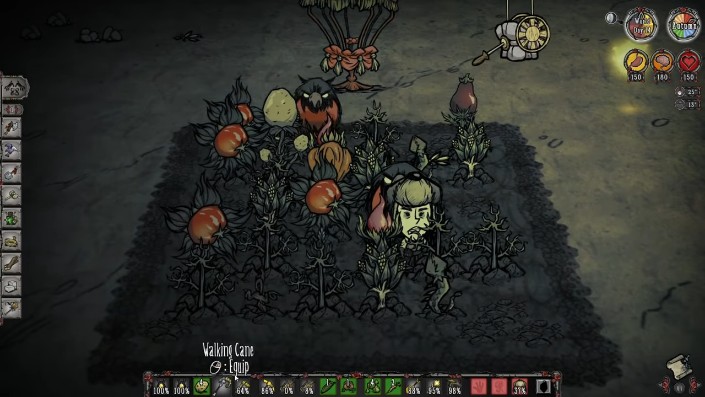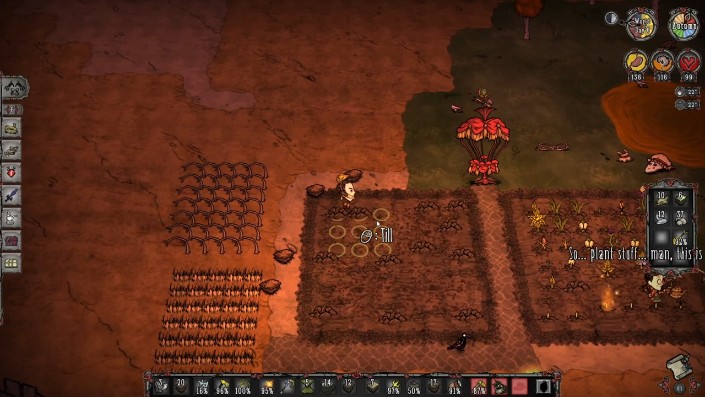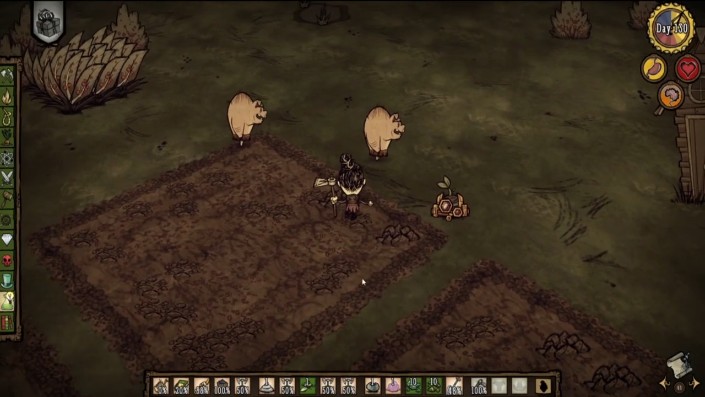Don't Starve Together (DST) is a survival game that challenges players to navigate a harsh wilderness filled with monsters, hunger, and the ever-present threat of starvation. One of the most effective ways to ensure survival is through farming, which involves using tools like the Garden Hoe. This article delves into the world of DST farming, focusing on the Garden Hoe and how it can be used to create a thriving farm.
Introduction to Don't Starve Together
Don't Starve Together is an expansion of the original Don't Starve game, designed for cooperative play. Players must work together to gather resources, craft items, and build shelter. The game features a unique farming system that allows players to grow their own food, providing a reliable source of sustenance.
Understanding the Garden Hoe
The Garden Hoe is a crucial tool in DST's farming system. It is used to till the soil, preparing it for planting seeds. Here's how to get started with the Garden Hoe:
- Crafting the Garden Hoe: The Garden Hoe can be crafted using a Science Machine. It requires 2 Twigs and 1 Flint to craft.
- Using the Garden Hoe: Once crafted, the Garden Hoe can be used on Farm Soil Turf to create a plantable area. This is done by deploying a Garden Digamajig on any turf, which converts it into Farm Soil Turf, and then using the Garden Hoe to till the soil.

Caption: Tilling the soil with the Garden Hoe to prepare for planting.
Key Features of the Garden Hoe
- Tilling Soil: The primary function of the Garden Hoe is to till the soil, making it ready for planting.
- Creating New Plots: The Garden Hoe can also be used to create new plantable areas by tilling unturfed tiles or areas previously used for farming.
- Limitations: The Garden Hoe can only be used on terrain that has been plowed by the Garden Rigamajig.
Farming in Don't Starve Together
Farming in DST involves several steps and strategies to maximize yield and efficiency. Here's a breakdown of how to farm effectively:
Steps to Farming
- Prepare the Soil:
- Deploy a Garden Digamajig to convert turf into Farm Soil Turf.
- Use the Garden Hoe to till the soil.

Caption: Planting seeds in the prepared Farm Soil Turf.
Plant Seeds:
- Seeds can be obtained from various sources, including looting or trading with other players.
- Plant the seeds in the tilled soil.
Tend to Your Plants:
- Watering is optional but recommended for faster growth and better yields.
- Use a watering can to water plants once per growth stage.
Harvest:
- Wait for the plants to mature, then harvest them for food or seeds.

Caption: Harvesting crops once they have fully matured.
Strategies for Efficient Farming
- Crop Selection: Choose crops that are easy to grow and provide good nutrition, such as potatoes and tomatoes.
- Nutrient Cycling: Different crops consume different nutrients from the soil. Planting a mix of crops can help maintain soil health.
- Family Bonus: Planting multiple plants of the same type in adjacent plots can increase yields due to the "family bonus."
Common Crop Combinations
| Crop Combination | Benefits |
|---|---|
| Potatoes & Tomatoes | Balanced nutrient consumption, easy to grow. |
| Potatoes, Onions, Garlic | Good for creating giant crops when planted in specific patterns. |
| Carrots & Pumpkins | Seasonal turnover crops that can become giant in winter. |
Advanced Farming Techniques
For more experienced players, advanced techniques can enhance farm productivity:
- Giant Crops: Achieve giant crops by planting specific combinations of seeds in larger plots (e.g., 2x2 or 3x3).
- Nutrient Management: Use fertilizers like "Bucket-o-Poop" to replenish soil nutrients.
- Seasonal Planning: Plan crop rotations based on the game's seasons to maximize yields.
Using Mods for Easier Farming
Mods can simplify the farming process by allowing for faster tilling or automatic layouts. For example, mods like Celestial Tools offer a moonglass hoe that can retill previously tilled ground more efficiently.
Real-World Analogies and Case Studies
While DST is a game, its farming mechanics can be compared to real-world gardening practices:

Caption: Real-world gardening practices that mirror DST farming mechanics.
- Crop Rotation: Just like in DST, real-world farmers rotate crops to maintain soil health and prevent nutrient depletion.
- Family Bonus: In real gardening, planting multiple plants of the same type together can improve growth due to mutual support and reduced competition.
- Efficiency Tools: Just as mods can streamline farming in DST, real-world gardeners use tools like automatic sprinklers and tillers to make gardening more efficient.
Conclusion and Additional Resources
Mastering the Garden Hoe and farming in Don't Starve Together requires patience, strategy, and practice. By understanding how to use the Garden Hoe effectively and implementing advanced farming techniques, players can ensure a steady food supply and enhance their survival chances.